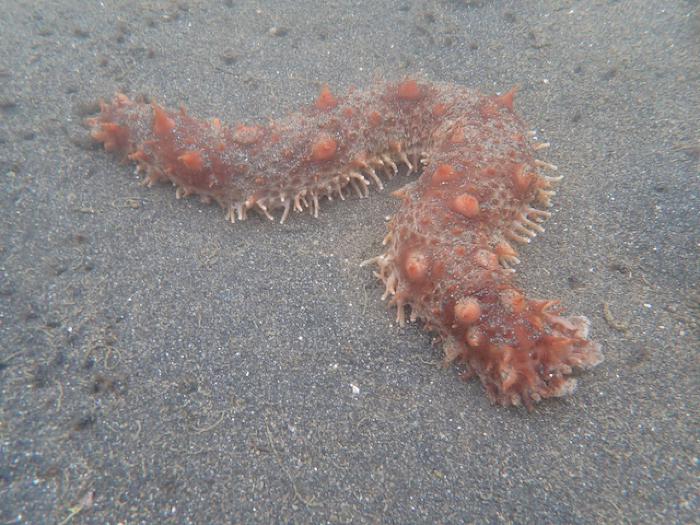Sea Cucumber — Anaqiitaq

The sea cucumber is an echinoderm, a creature related to sea urchins and sea stars. There are many varieties of sea cucumbers found in Alaska waters, from intertidal areas to the edge of the continental shelf. Sea cucumbers are known for their ability to expel and regrow their digestive systems, a process each animal repeats annually, or when threatened by predators like sea otters, fish, crab, and sea stars. The most frequently harvested variety is the giant red sea cucumber (Parastichopus californicus). These slow-moving, widely available, bottom feeders grow up to about a foot long, weigh 4 pounds each, and have spiny brown skin.
The Alutiiq word for sea cucumber—anaqiitaq—comes from anaq, the word for excrement. This connection reflects the animal’s shape and appearance. Despite this unappetizing reference, the animals have a history of subsistence use in Alaska where they are harvested by hand or with spears.
Alutiiq people do not harvest sea cucumbers widely today, and Elders do not recall eating the creatures as children. However, Alutiiq people recognize that sea cucumbers are a source of food, and some people report that they can be sliced thinly and pan-fried to create a dish that tastes like clam strips.
Today, sea cucumbers are best known for their economic value. Commercial sea cucumbers fishing began in Alaska in 1983, in southeast waters. The Kodiak fishery opened for the first time in 1991. Today, Kodiak divers harvest about 150,000 pounds of sea cucumbers annually. They collect the animals by hand, placing them in mesh bags. On the dock, they gut their catch and deliver them to canneries to be processed for both meat and skin, foods enjoyed in Asia.
